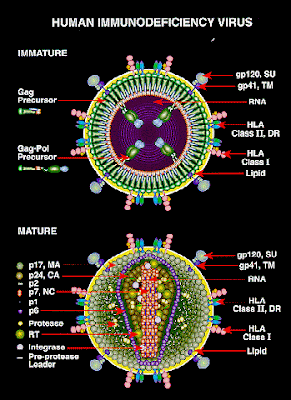Examination of HIV
Laboratory examination to find out exactly whether someone infected with HIV is important, because the symptoms of HIV clinis infection can be seen after many years.
There are several types of laboratory examinations to verify the diagnosis of HIV infection. In general can be divided into serology examination to detect the antibody against HIV and examination to detect the existence of the HIV virus. Detection of HIV virus in the body can be done with virus isolation and culture, antigen detection, detection and the genetic material in the blood of the patient. (Djoerban, 2006)
Examination that is more easily carried out the examination of the HIV antibody. Filter is usually used as the ELISA technique (Enzyme-Linked Immunosorbent Assay), agglutinate or dot-blot immunobinding assay. In the ELISA test is used lisat entire body of the virus with a cut off value degraded to improve the sensitivity test. The usual method in Indonesia is the ELISA.
Things that need to be in the HIV antibody test for the existence of this window period. Window period of time since the body is infected with HIV until the start of the incidence of antibody can be detected with the examination. Antibody began to form in 4-8 weeks after infection.
If the examination results of the filter states reactive, inspections can proceed with the examination to ensure the confirmation of infection by HIV, the most frequently used technique is Western Blot (WB) (Djoerban, 2006). This test is a more specific test for determining the existence of parts of the protein in the HIV p24, gp41, and gp120/160. Told found positive when 2 or 3 protein is determined.
Abdominal Pain
16 years ago


No comments:
Post a Comment